Benjamin O. Davis, Jr.
Benjamin O. Davis, Jr. is remembered for many things: Being the first Black Air Force General, leading the Tuskegee Airmen flight squadron and standing up to the military establishment in advancing the cause of Black soldiers. More than that, he is a symbol of the ability of a Black man to persevere through obstacles on the path towards excellence.
Benjamin Oliver Davis Jr. was born in Washington. D.C. on December 18, 1912, the son of Benjamin O. Davis, Sr. and Elnora Dickerson Davis. His father was a renowned military officer, the first Black General in the United States Army. Benjamin, Sr. served in various capacities (beginning in the Spanish-American war), including serving in one of the original Buffalo Soldier regiments. Unfortunately, Elnora died from complications from childbirth in 1916 when Benjamin, Jr. was four years old.
When Benjamin, Jr. (hereinafter just Davis) was 13 years old, he attended a barnstorming exhibition at Bolling Field in Washington, D.C. (now Bolling Air Force Base). One of the pilots offered him the opportunity to accompany him on a ride in his plane. Benjamin enjoyed it so much that he became determined to pilot a plane himself one day.
With his father moving around in his military duties, he attended Central High School in Cleveland, Ohio and graduated in 1929. He enrolled Western Reserve University (1929-1930) and later moved on to the University of Chicago (1930-1932). Still desiring to serve as a military pilot he contacted Illinois Representative Oscar De Priest (the first Black alderman in Chicago, and at the time, the only Black serving in Congress). De Priest sponsored him for a spot in the United States Military Academy in West Point, New York. His time in the Academy was harsh, hostile and relentless in the challenges and obstacles it put in his way. Throughout his four years, none of his classmates would speak to him outside the line of duty. None would be his roommate and none would sit with him to eat. Nonetheless, he graduated in 1936, finishing 35th in his class of 278. When he received his commission as a second lieutenant in the infantry he became one of only two Black combat officers in the United States Army – the other being his father Benjamin O. Davis, Sr.
“The courage, tenacity, and intelligence with which he conquered a problem incomparably more difficult than plebe year won for him the sincere admiration of his classmates, and his single-minded determination to continue in his chosen career cannot fail to inspire respect wherever fortune may lead him.” – Howitzer, the 1936 West Point yearbook
Upon graduation, he married Agatha Scott, a young lady whom he had dated while attending the Academy.
Because of his high standing in his graduating class, Davis should have had his choice of assignments, but when he opted to apply for the Army Air Corps he was denied because the Air Corps did not have a Black squadron. He was instead assigned to the 24th Infantry Regiment, an all-Black division located in Fort Benning, Georgia. Although an officer, he was not permitted to enter the officers club on the base. After attending the U.S. Army Infantry School, he followed in his father’s footsteps and traveled to Tuskegee, Alabama to teach a military tactics course at the Tuskegee Institute. On June 19, 1939, he was promoted to the rank of First Lieutenant and subsequently up to Captain, Major and then temporarily to Lieutenant Colonel (a rank he would hold permanently in June 1948).
Despite the prestige of being an instructor, Davis still wanted to fly. Fortunately, others had the same desire and pressure was mounted on the Roosevelt administration to allow for greater participation by Blacks as the country was moving towards war. The administration, therefore, directed the War Department to create a Black flying unit. To his delight, Davis was assigned to undergo training in the first class at the Tuskegee Army Air Field. In 1942 he finished his training and was one of only five Blacks to complete the course and then became the first Black Officer to make a solo flight in an Army Air Corps plane. He was promoted to the rank of Lieutenant Colonel and in July 1942 he was assigned as the commander of the 99th Pursuit Squadron, known by history as the Tuskegee Airmen.
In 1943, the 99th Pursuit Squadron was assigned first to Tunisia, then to a combat mission in the German-held Island of Pantelleria and finally took part in the allied invasion of Sicily. In September, Davis was recalled to Tuskegee to take over a larger all-black unit preparing for combat in Europe, the 332nd Fighter Group.
Almost immediately, however, problems arose for Davis. A number of Senior Army Air Corps officers complained to Army Chief of Staff George Marshall that the 99th Fighter Squadron had under-performed and should thereafter be taken out of combat. Major General Edwin House, Commander of the XII Air Support Command wrote in September 1943 that “the Negro type has not the proper reflexes to make a first-class fighter pilot.” A furious Davis argued that no information had been presented to him that showed anything to suggest that the Black fighter pilots had performed unsatisfactorily. He presented his case to the War Department and held a press conference at the Pentagon. General Marshall did call for an inquiry but allowed the 99th Squadron to continue to fight while the investigation continued. When the results of the inquiry came back, the 99th Squadron was vindicated and found to have performed similarly to other fighter squadrons. Any continuing arguments ceased in January 1944 when the 99th shot down 12 German fighters in a two day period.
Soon thereafter Colonel Davis and the 332nd Fighter Group arrived in Italy where they were based at Ramitelli Airfield. The 332nd, called the Red Tails because of the distinctive paint scheme on the tails of their planes, performed well as bomber escorts, often being requested by bomber pilots because of their insistence on not abandoning the bombers. The group would eventually move into the use of state of the art P-47 Thunderbolts.
Davis participated in numerous missions, flying in P-47 Thunderbolts and P-51 Mustangs. He was awarded the Silver Star for a mission in Austria and won the Distinguished Flying Cross for a bomber-escort mission to Munich, Germany in June, 1944.
In 1945, Colonel Davis was placed in charge of 477th Bombardment Group, the group being comprised entirely of Blacks, stationed at Godman Field in Kentucky.
 In the summer of 1949, Davis was assigned to attend the Air War College. He was the first Black permitted to attend the college and it was significant because further promotion was dependent upon successful graduation. Despite dealing with the racial climate in place in Montgomery, Alabama, where the War College took place, he persevered and excelled and upon graduation received an assignment to serve at the United States Air Force Headwaters at the Pentagon.
In the summer of 1949, Davis was assigned to attend the Air War College. He was the first Black permitted to attend the college and it was significant because further promotion was dependent upon successful graduation. Despite dealing with the racial climate in place in Montgomery, Alabama, where the War College took place, he persevered and excelled and upon graduation received an assignment to serve at the United States Air Force Headwaters at the Pentagon.
He next served as Director of Operations and Training at Far East Air Forces Headquarters, Tokyo and then was assigned the position of Vice Commander, Thirteenth Air Force and was promoted to the rank of Brigadier General, a rank not made permanent until after his temporary promotion to Major General. His assignments around the world became almost too numerous to list but included:
- Assigned command of the 477th Composite Group at Godman Field, Kentucky
- Assigned command of Lockbourne Army Air Base, Ohio
- Assigned command of the 332nd Fighter Wing.
- Named Chief of the Air Defense Branch of Air Force operations
- Named Deputy Chief of Staff for Operations, Headquarters U.S. Air Force, Washington, D.C.
- Assigned command of the 51st Fighter-Interceptor Wing, Far East Air Forces, Korea.
- Named as Director of Operations and Training at Far East Air Forces Headquarters, Tokyo
- Named Vice Commander, Thirteenth Air Force, with additional duty as commander, Air Task Force 13 (Provisional), Taipei, Formosa.
- Named Chief of Staff, Twelfth Air Force, U.S. Air Forces in Europe at Ramstein, Germany.
- Named Deputy Chief of Staff for operations, Headquarters U.S. Air Forces in Europe, Wiesbaden, Germany.
- Named Director of Manpower and Organization, United States and Headquarters U.S. Air Force and Deputy Chief of Staff for Programs and Requirements.
- Named Assistant Deputy Chief of Staff, Programs and Requirements.
- Assigned as Chief of Staff for the United Nations Command and U.S. Forces in Korea.
- Assigned command of the Thirteenth Air Force at Clark Air Base in the Republic of the Philippines.
- Named Deputy Commander in Chief, U.S. Strike Command, with headquarters at MacDill Air Force Base, Florida.
- Named Commander in Chief, Middle-East, Southern Asia and Africa.
He was promoted to the rank of Brigadier General in May 1960 and to Major General in January 1962. He was promoted to the rank of Lieutenant General in April 1965 and retired from active duty on February 1, 1970 after more than 33 years of military service. Finally, on December 9, 1998, President Bill Clinton decorated him with a four-star insignia, advancing him to the rank of General, U.S. Air Force (Retired).
He did not slow down upon his retirement, instead moving on to other ways to serve. In 1970 he was put in charge of the Federal Sky Marshall Program and in 1971 was named Assistant Secretary of Transportation for Environment, Safety, and Consumer Affairs. In this role, he oversaw the creation and implementation of airport security and highway safety programs and procedures (this included the establishment of the 55 mile per hour speed limit to improve gas efficiency and to promote driver safety). After retiring from the Department of Transportation in 1975, he followed in his father’s footsteps again by serving on the American Battle Monuments Commission. Finally, in 1991 Davis wrote his memoirs, relating his challenges and achievements over the years in his book Benjamin O. Davis, Jr.: American.
- Air Force Distinguished Service Medal
- Army Distinguished Service Medal
- Air Medal with four oak leaf clusters
- Philippine Legion of Honor
- Legion of Merit with two oak leaf clusters
- Air Force Commendation Medal with two oak leaf clusters
- Silver Star
- Distinguished Flying Cross
Whether it was in the skies or the classroom, whether training pilots or advising presidents, Benjamin O. Davis, Jr. led of life of professionalism, dignity and achievement, never allowing racism and other obstacles to slow him down. In doing so, he opened avenues within the military for generations of soldiers and pilots who followed in his enormous footsteps.
“General Davis is here today as living proof that a person can overcome adversity and discrimination, achieve great things, turn skeptics into believers; and through example and perseverance, one person can bring truly extraordinary change.” – President Bill Clinton

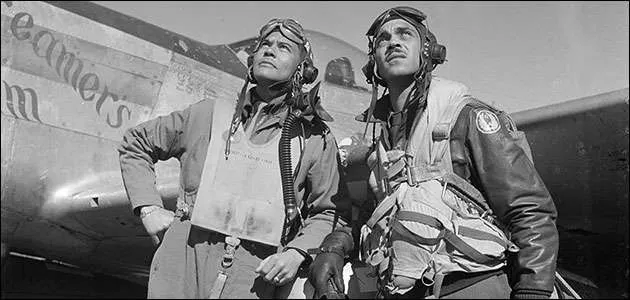
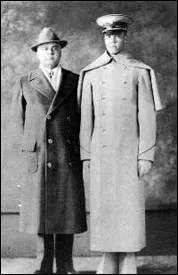
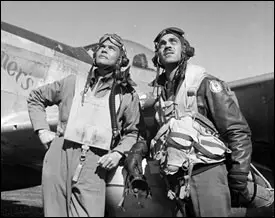
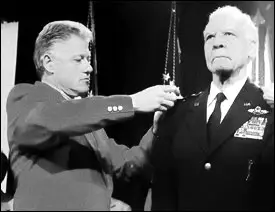

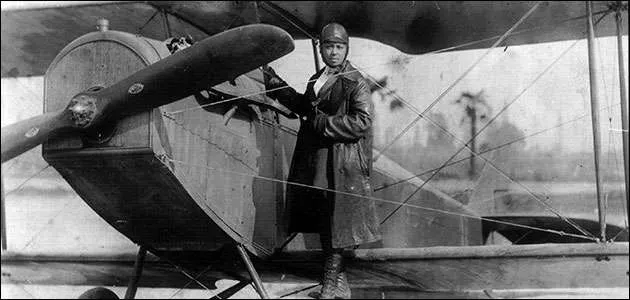
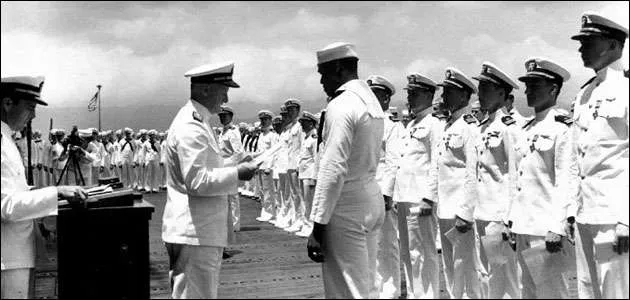

 Like Us on Facebook
Like Us on Facebook Tweet Us on Twitter
Tweet Us on Twitter Watch Us on YouTube
Watch Us on YouTube Pin Us on Pinterest
Pin Us on Pinterest Link to Us on LinkedIn
Link to Us on LinkedIn Adscape International, LLC
Adscape International, LLC PO Box 173 Brandywine, MD 20613
PO Box 173 Brandywine, MD 20613 240-244-9660
240-244-9660
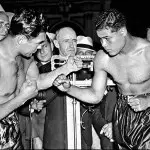
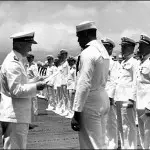
Leave a Reply
Want to join the discussion?Feel free to contribute!